Are you a business owner who is looking to promote your business on social media? To successfully market your business, you must first identify your target audience. You must ask yourself whether you want to market your business to a B2B audience or a B2C audience. Most social media platforms cater to B2C audiences like Facebook, Twitter, and Instagram, while LinkedIn has more of a B2B audience pool.
Unlike other social media platforms, LinkedIn mostly has individuals who are more interested in networking based on professional profiles and individuals related to similar industries. LinkedIn has an unmatched potential for businesses, and what better way to market than on LinkedIn Groups.
The platform has more than 774+ million users. It holds ample space for its members dedicated to sharing their expertise, building communities, and delivering value to others through their networking and advice. LinkedIn’s algorithm favors marketers with posts having more visibility, leading to driving more social media engagement.
Let’s further dive into how you can set up a LinkedIn Group to promote your business.
What are LinkedIn Groups?
LinkedIn Groups are dedicated hubs where like-minded people belonging to similar industries or niches can share their expertise, engage with others in healthy conversations and contribute in helping others with their knowledge, thus providing a way to build active communities. These groups have been around for quite some time. Still, with more and more people entering this space, their importance continues to grow where people are now looking into building a dedicated and self-sustaining community.
Only members of the groups are allowed to view or comment on the conversations, and every group has its admission criteria, so be sure to follow them.
Now LinkedIn groups hold an overlooked opportunity to build a community around your brand or product. Here members can share their opinions and experiences with your brand and can also help with generating more revenue for your brand by engaging with prospects and guiding them. Remember, word of mouth is a powerful way of marketing. According to a survey, 83% of people are more likely to purchase when it’s through a recommendation.
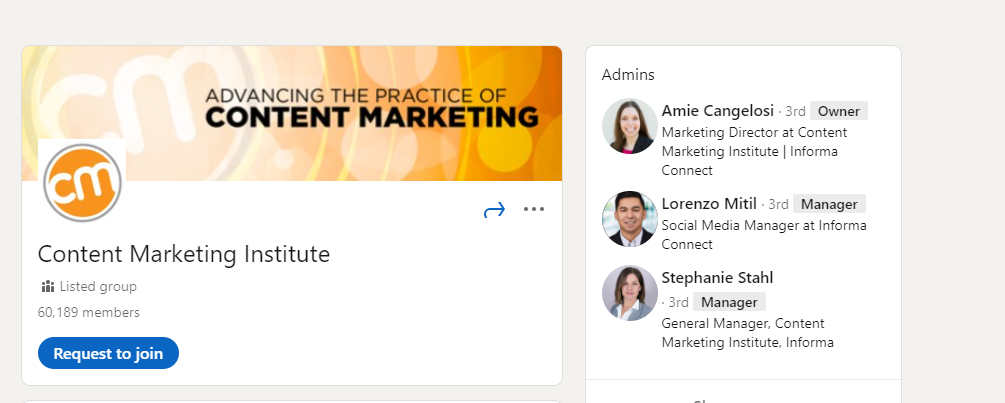
(Source: Content Marketing Institute Linkedin Group)
Why Should They Be a Part of Marketing Strategy? – Benefits & Best Practices
To start, these groups are one of the essential ways to communicate one-to-one with your customers. Whether you are an admin or a group member, these groups can help your business network with professionals belonging to the same industry. LinkedIn Groups can help connect your brand with its customers by establishing a forum for them as a business.
This allows businesses to reach a targeted audience of professionals and build genuine relationships with them.
Although there are many LinkedIn Groups available online, those who know their worth use it to share authentic and credible content that can drive higher engagement and get quality interactions. These groups can also boost your brand’s visibility when you go out to other LinkedIn groups and engage with others. This would indeed establish your expertise. Once you have built up your reputation, you can also start sharing your brand’s content.
Sharing relevant content is also a way to drive more visitors and prospects to your website. Individuals related to the same industry and your group members are precious as they pose potential prospects.
Remember members of your LinkedIn group are part of your online community, and these communities hold multiple benefits like:
- They are vital because they promote engagement.
- Every active engagement helps bring users closer to your brand.
- These groups increase your brand visibility on the platform.
- They help attract more potential customers.
- They foster brand affinity and loyalty, as group members will reference your brand as the entity responsible for their positive experience and growth.
- They create a welcoming and engaging environment.
- They foster trust. If you can get your members to function as a community, it will signify that your brand is trustworthy. LinkedIn groups are incubators of inspiration because they encourage members to share their own stories, create connections, and inspire others to action.
- They attract more prospects and earn higher retention rates as a result.
To build engaging LinkedIn Groups, you should first contribute yourself, provide value to other group members, share any opportunities with them and try to be a good member yourself. The golden rule of an ecosystem is that what you give comes back to you. Establish yourself as a credible fellow and let your work speak for you. Remember, these groups are on a platform that is a networking space for professionals, and here expertise matters.
Here are our most recommended best practices that you should use to build and grow your LinkedIn Group:
Contribute to your Group – Try to bring value to your Linkedin groups. Often many members join groups to seek advice from experts. They are looking for solutions to their problems, and your advice could help these new members and turn them into active and engaging followers of your brand.
Listen and Engage – Try to keep an eye on different topics and discussions happening in your group, engage with other fellow members in conversations, and give experts shoutouts, which helps build a sense of appreciation and leads to more growth for your LinkedIn group.
Start Discussions – Start discussions around trending topics and news related to your niche. These discussions boost your LinkedIn groups’ visibility and get experts to start healthy conversations that other group members can join.
Avoid Spamming – Remember, audiences don’t like it when bombarded with irrelevant or spammy links in Linkedin groups. These groups are valuable and members like it when relevant content is shared, so avoid spamming at all costs.
Getting Started with LinkedIn Groups
Setting up a LinkedIn Group is not that difficult. Everyone can set it up. The tricky part is identifying your target audience and customizing your group to suit and fulfill their needs. Pretty much everyone is attracted to a group due to the presence of an experienced LinkedIn community, but optimizing it to come across the eyes of the right audience takes a little bit of knowledge.
Let’s explore different elements required to set up your first LinkedIn Group.
Group Name and Description
The first step towards creating a LinkedIn Group is to set a name for your group. Now, most businesses may want to name it after their business or brand, but try to understand that LinkedIn groups are not for selling. They are here to provide value to other members and help build a community around a particular topic or niche.
Take Hubspot’s group; for instance, they are solely dedicated to inbound marketers and have more than 140,000 members. The members are primarily engaged in discussions around different strategies and tactics related to inbound marketing.
The character limit for setting a group name is limited to 100 characters, and group description allows a maximum of 2000 characters.
Draft your group description to tell potential members what the group is about and what value they would get while being a part of this community.

Setting up the Visual Profile
Let’s clarify; no one would want to come to a group that doesn’t have an identity. Setting up a proper profile picture and a cover image will make it visually attractive. It would also help establish a brand’s identity that is beneficial for every business in the longer run.
Industry and Location
LinkedIn allows adding up to 3 industries in your group’s bio and 1 location. Adding them helps pair up and deliver it in front of the right audience that belongs to a similar industry. In contrast, the location allows the group to come across an audience from that region.

Group Rules & Discoverability
Group Rules define the barriers and restrict group members towards content they can share or the extent of discussions they could participate in. Most LinkedIn groups’ rules are set to keep things in balance on the platform. Promoters and marketers mostly spam many groups. Setting up group rules and moderations could help in keeping the group safe and valuable for its members. Here are the rules set up across Hubspot’s group.

(Source: Inbound Marketers Group)
LinkedIn offers two different discoverability options Listed and Unlisted. The Listed option allows the group to be discovered in search results and visible to others on members’ profiles, while the Unlisted option restricts all.
Permissions
While setting up your LinkedIn group, the final option is setting up the group permission; there are two permission options. First is allowing members to invite others to join the group, which can be beneficial in growing the group’s following and inviting experts to contribute with their knowledge and advice to the group’s overall success.

7 Post Ideas to Unlock the Potential of LinkedIn Groups
Now that you have the idea of setting up your group, it’s about time we discuss how to leverage LinkedIn’s community for your business.
Brands could deliver a more personalized experience through their LinkedIn groups. LinkedIn groups offer benefits for business owners and marketers, such as boosting organic reach and direct access to an interested audience.
As for now, LinkedIn groups have become an essential tool for establishing and maintaining a community that shares an interest in the brand’s products and services.
Such LinkedIn groups can also be beneficial in creating a direct customer relationship, as they create a connection that works on a personal level. The group members are more likely to engage with the group admins, who can moderate and influence the direction of the discussions by adding relevant posts and comments.
Through engaging with the members and resolving their issues, brands can capitalize on the opportunity to build an active and responsible community around their products and services.
Apart from this, LinkedIn offers a variety of post types that can be used to optimize the deliverability of content and value that you want to provide to your LinkedIn community. Let’s explore them one by one.

Add a Photo/Video
As the name speaks for itself, this post type lets you share a photo or a video with your group members but here’s where creativity truly outshines. Marketers experiment with different ideas around topics that can grab the audience’s attention and start a healthy discussion around them.
The picture or video can be a meme or a celebration video towards an upcoming event or a holiday like Christmas. The ideas are just beyond imagination, which we genuinely need to capture the right audience for our brand or product.
Add a Document
This post type allows group members and admins to share a document within their community. Most groups utilize this post type to share important documents relevant to the brand or related to the group’s topic. LinkedIn also has an option that allows sharing the record directly through a link from Dropbox or Google Drive.

Celebrate an Occasion
LinkedIn offers a variety of options to let the world know about your success. It doesn’t have to be a big win. There are minor aspects in life that can be cherished, like welcoming a new member to your team or an appreciation post for someone who’s going the extra mile just for your company. Celebrating your success and giving appreciation can motivate your team members and onboard others towards potential brand advocacy.
Share Hiring Posts
Experienced group members are often interested in becoming part of your organization. They actively engage and keep an eye for upcoming hirings. Sharing upcoming hiring opportunities with group members may guide members towards better engagement and become a bridge to find the ideal candidate for your business or brand.

Find an Expert
The find an expert feature lets you pinpoint the perfect description required to find an ideal candidate based on your needs and requirements. It allows you to filter them in a particular region or demographics. Group members can use this to find experts related to a specific service that they are looking for.


Create a Poll
Polls are a great way to get opinions of your LinkedIn community. They can be around any topic or discussion and can sometimes serve as an ice breaker to get those members who are somehow shy to engage with members of the groups. You can use them to get insights on specific topics and how people feel about them. The poll feature allows users to add up to 4 options and up to a month.

Offer Help
This feature came along with lots of benefits to help the members of the community. Experts from the group can help other members by offering different services, advice, or guidance to lend them an extra hand during hard times.

Conclusion
Now that you are fully aware of LinkedIn, Groups harness its potential to build a community of healthy and engaging individuals eager to acquire knowledge about your brand or product. Remember to help them understand new ideas, provide knowledgeable insights that would turn them from potential prospects into profitable customers.
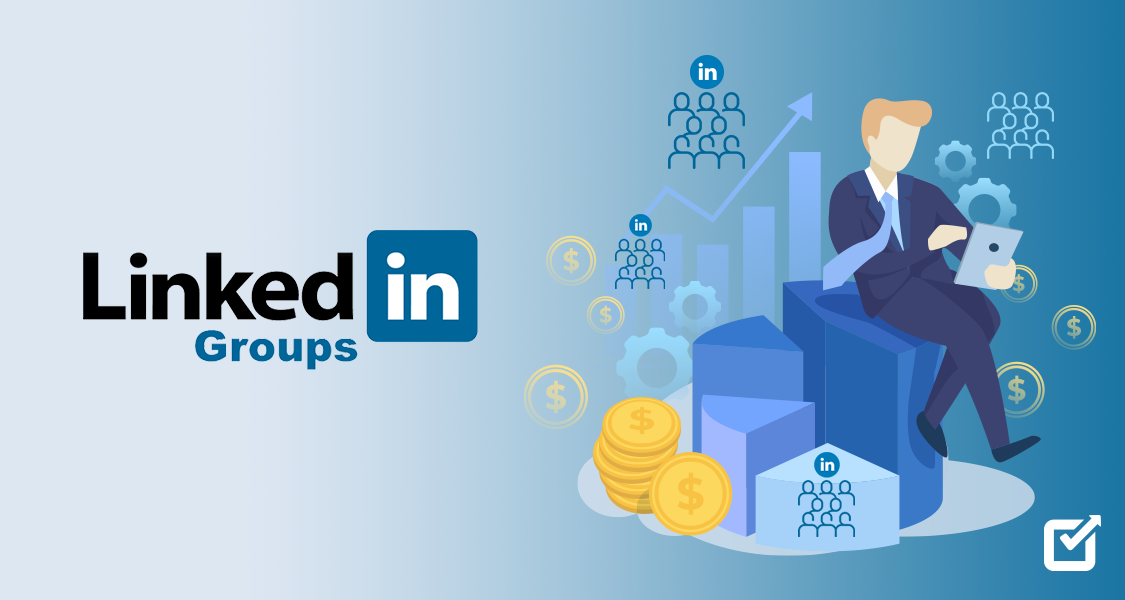









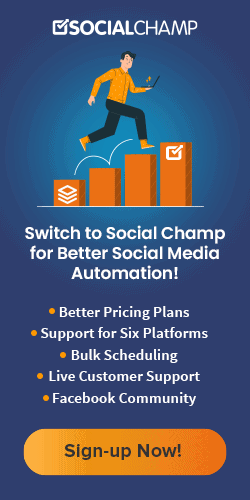









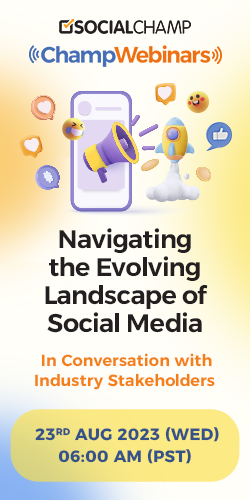
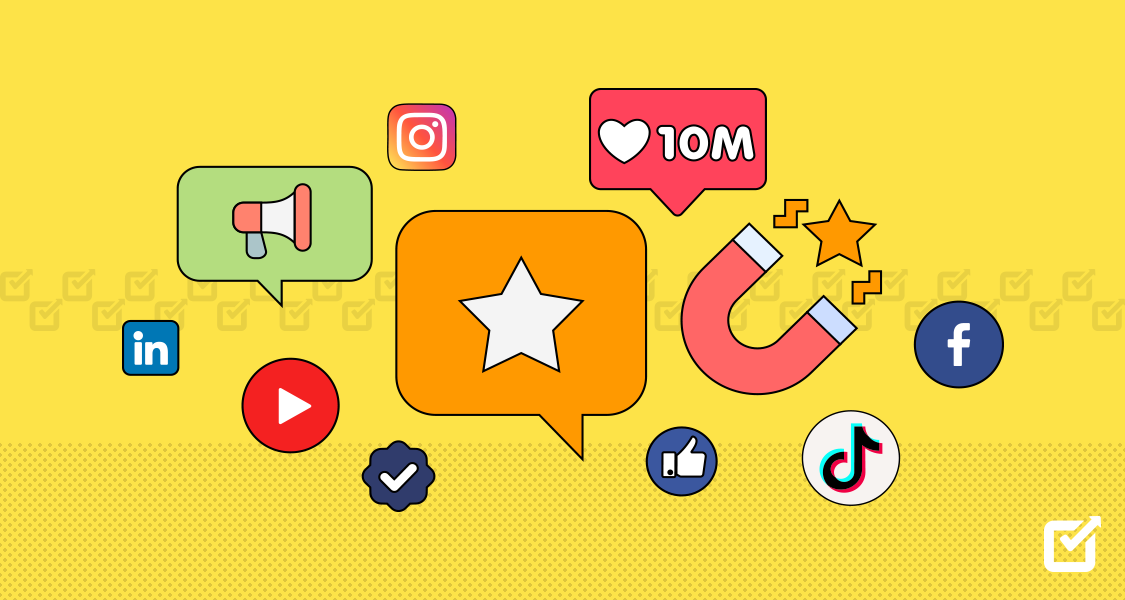



3 thoughts on “The Definite Guide To Using LinkedIn Groups for Business”
Excellent post. We have been trying to get our linked in group moving for some time. Now I am definately going to try some of these tips mentioned above. Thanks for sharing!
What is the difference between your suggestion of using LinkedIn Groups versus Community on a LinkedIn Company Page? I’m interested in why LinkedIn Groups is being used.
Does Social champ allow me to schedule and publish posts to LinkedIn groups? If so, how?